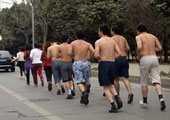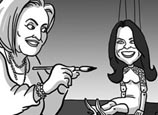
"The move requires setting up a system to ensure the effective supply of important agricultural products, increase farmers' income and improve their livelihoods, as well as push forward reforms in rural areas," the central policy document said.
Zhang Yongjun, deputy director of the Economic Research Department of the China Center for International Economic Exchanges, said that the successful establishment of rural workers in cities is key to solving the middle-income trap.
"Policies should be improved to include migrant rural workers in urban social security systems, and to provide them with employment opportunities," Zhang said. "So the promotion of agricultural modernization should be in line with the process of urbanization and industrialization."
A study from the Academy of Macroeconomic Research of the National Development and Reform Commission showed that countries on the high-income list should meet three conditions: urban residents should be more than 70 percent of the population; the agricultural sector's labor productivity should be close to those of the industrial and services sectors; and rural residents' incomes should be close to or more than those of urban residents.
"One of the most urgent things is to lower the barriers for investments into the agricultural industry," said Zheng.
The development of large modern farms and increased purchases of mechanical equipment require more capital, he said.
Zong Liang, deputy head of the international finance research institute of the Bank of China, said that the agricultural modernization process, together with urbanization, will sustain stable growth of about 8 percent in China during the next 10 years.
"The middle-income trap was seen in many countries in Africa, but is unlikely to happen in China as long as we improve our economic structure," Zong said.

















 At 75, he travelled in Europe; at 98, he got a master's degree; at 102, he published an autobiography.
At 75, he travelled in Europe; at 98, he got a master's degree; at 102, he published an autobiography.


![]()
